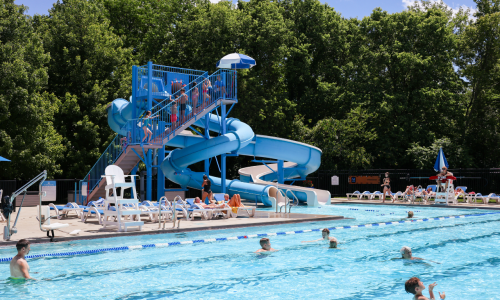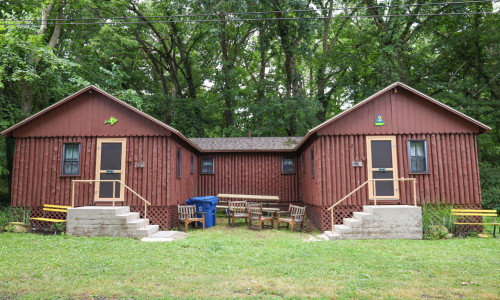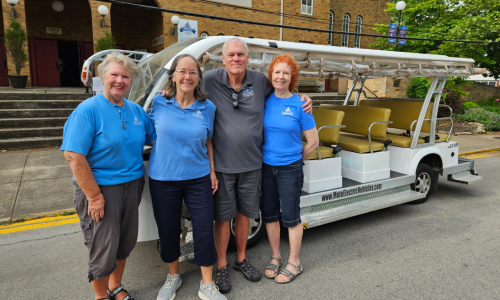Staff Blogger: Gretchen Colón, Vice President of Advancement & Communications
*This blog was written by Gretchen Colón on Tuesday, Feb. 13 local time.
 Today was a day at the sea! Caesarea, a beautiful city on the Mediterranean coast, was a gift to Herod the Great and took more than 12 years to complete. As we approached the coast, our eyes caught the vibrant blue water and the fine, glimmering sand. The group took a big breath of the fresh smell of salt water as we admired the great beauty of the Mediterranean Sea.
Today was a day at the sea! Caesarea, a beautiful city on the Mediterranean coast, was a gift to Herod the Great and took more than 12 years to complete. As we approached the coast, our eyes caught the vibrant blue water and the fine, glimmering sand. The group took a big breath of the fresh smell of salt water as we admired the great beauty of the Mediterranean Sea.
Caesarea is full of artifacts from thousands of years ago. To give you an idea of the size of the ancient city, there was a law that there must be a theater in the town that can seat at least 10 percent of the population. The theater that stood in front of us could seat more than 4,000 people. At the theater, there is a stone inscribed with the words “Pontius Pilatus, Prefect of Judea, has dedicated to the people of Caesarea a temple in honor of Tiberius.” Today, the original stone is in a museum but you can see a replica here on the theater.
Herod envisioned a great port city and he was successful at creating it in Caesarea. His palace sat right on the water’s edge and the chariot-racing track overlooked the Mediterranean Sea. It was near this location that Paul was likely to argue his defense before Roman procurators Felix and Festus and Jewish King Agrippa II during his two-year imprisonment.
This city also had an aqueduct, which was very sophisticated at the time. The aqueduct ran along the sea and carried the water to Caesarea. Today, the aqueduct is part of a public beach that we were able to visit. The beautiful multi-shade blue water was a site to see as it crashed along the rocks on the shoreline, much like the water does on our own Lake Erie.
Standing in this city, you could feel the presence of thousands of years’ worth of history.
 Elija’s View from Mount Carmel
Elija’s View from Mount Carmel
After visiting Caesarea, the charter bus drove us through more winding and narrow streets to Mount Carmel.
We reflect on the passage in the book of 1 Kings where Elijah overlooked the western section of the Jezreel Valley.
“I have not made trouble for Israel,” Elijah replied. “But you and your father’s family have. You have abandoned the Lord’s commands and have followed the Baals. Now summon the people from all over Israel to meet me on Mount Carmel. And bring the 450 prophets of Baal and the 400 prophets of Asherah, who eat at Jezebel’s table.” So Ahab sent word throughout all Israel and assembled the prophets on Mount Carmel. Elijah went before the people and said, “How long will you waver between two opinions? If the Lord is God, follow him; but if Baal is God, follow him.”
1 Kings 18:18-20
On top of Mount Carmel, there is a beautiful monastery surrounded by gardens. To get an even better view, we climbed to the rooftop of the monastery and from there we looked across the land to see Mount Hermon, Beit Shearim, Kishon River, Tel Aviv, Netanya, Jerusalem, Judea-Samaria. This land, near Mount Carmel is lush and green, very different from the desert near the Dead Sea.
Megiddo
This high hill is where more than 20 civilizations were discovered by the University of Chicago archeologists in the 1930s. The gate that we entered the city in today was the gate the Canaanites built in 16 B.C. The stables, temples and altar from that time still stand in the city today.
From the top, we could see the layers of civilization and looked out across the green land. This is the place that the first armed conflict in history was recorded by eyewitnesses. Tradition says that the final battle described in Revelations 16:16 will be fought here.
There was an underground passage built from the top of the mountain to the spring of water outside of the gates because they needed to get water while the enemy attacked. More than 20 of us ventured down into the underground passage to see what it was like in 16 B.C. to get water. It was unimaginable to us now. We have such easy access to water, and these ancient civilizations had to put in hard labor to build the tunnel, and then travel it every day to bring water home to their people.
After this, we exited Megiddo and were off to our final destination.
 Mount of Precipice: The Leaping Mountain
Mount of Precipice: The Leaping Mountain
We stood on top of this mountain, about 400 meters high, overlooking Nazareth. Into the distance, you could see Mount Tabor and the Jezreel Valley.
This is the mountain where Jesus jumped from when fleeing his pursuers in Luke 4:16-30.
“He went to Nazareth, where he had been brought up, and on the Sabbath day he went into the synagogue, as was his custom. He stood up to read, and the scroll of the prophet Isaiah was handed to him. Unrolling it, he found the place where it is written:
“The Spirit of the Lord is on me,
because he has anointed me
to proclaim good news to the poor.
He has sent me to proclaim freedom for the prisoners
and recovery of sight for the blind,
to set the oppressed free,
to proclaim the year of the Lord’s favor.”Then he rolled up the scroll, gave it back to the attendant and sat down. The eyes of everyone in the synagogue were fastened on him. He began by saying to them, “Today this scripture is fulfilled in your hearing.”
All spoke well of him and were amazed at the gracious words that came from his lips. “Isn’t this Joseph’s son?” they asked.
Jesus said to them, “Surely you will quote this proverb to me: ‘Physician, heal yourself!’ And you will tell me, ‘Do here in your hometown what we have heard that you did in Capernaum.’”
“Truly I tell you,” he continued, “no prophet is accepted in his hometown. I assure you that there were many widows in Israel in Elijah’s time, when the sky was shut for three and a half years and there was a severe famine throughout the land. Yet Elijah was not sent to any of them, but to a widow in Zarephath in the region of Sidon. And there were many in Israel with leprosy in the time of Elisha the prophet, yet not one of them was cleansed—only Naaman the Syrian.”
All the people in the synagogue were furious when they heard this. They got up, drove him out of the town, and took him to the brow of the hill on which the town was built, in order to throw him off the cliff. But he walked right through the crowd and went on his way.”
As we admired the bright red poppy flowers along the path, we headed down the path back to the bus. The wind was cold and the air was moist.
Tonight, we will stay on the Sea of Galilee. We’ve read so many stories about the sea. It was hard to believe that our hotel overlooked this magnificent place we learned about in so many Bible stories.
Dear God, we are thankful for the relationships that we are creating and will cherish for years to come. We continue our journey, but pause to praise You. These unique places Jesus, your Son, traveled; we travel today, too. We imagined the pictures in our minds when we read the stories, but these pictures are more vivid now that we have stood at these places. We ask for Your strength for those traveling – safety, comfort and security. Amen




